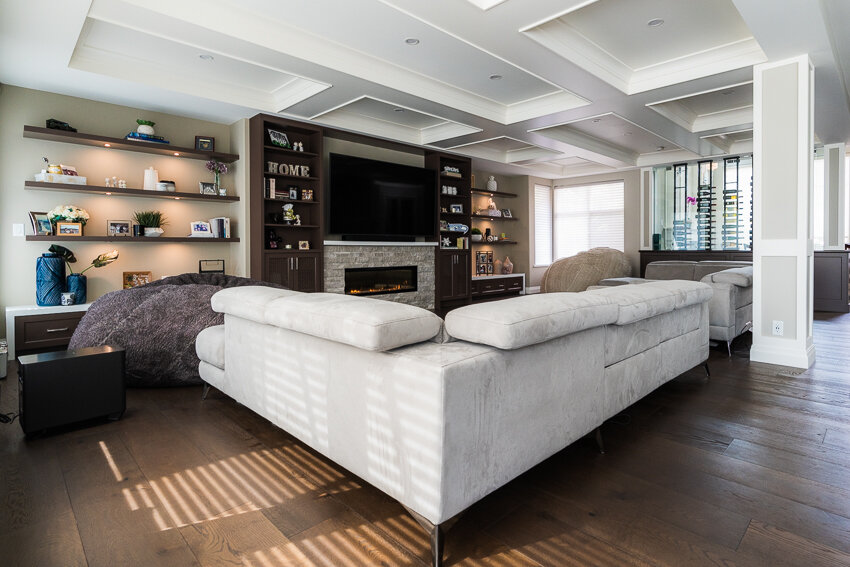The Ten Commandments of a Minimalistic Interior Design
There’s a fine line between minimalism and maximalism when it comes to designing our homes, especially for business establishments where you can’t only think about what’s pleasing to your eyes but you have to see things from your clients’ point of view as well.
Ironically, some people find the ‘less is more’ idea complicated to do. The thought of not being able to pick all the decors and even furniture you like because you want to achieve minimalism can feel too constraining for some, but this shouldn’t be the case.
From picking which items to include in your interior design to choosing the minimalist color scheme, there are helpful rules that will make you feel on track in attaining the perfect, beautiful and minimalist interior design for your hotel, bar, restaurant, or any other business.
The Art and History of Minimalism
Minimalism or minimalist art is a form of abstract art which was developed in the USA in the 60’s. Originally, minimalism is represented through art works composed of simple geometric shapes based on the square and the rectangle.
What does this tell us? What is minimalism all about? Simply put, it is the abstract idea that art should never be an imitation of something else. Instead, it should have its own reality. This means that a single plank of wood is an art that means only itself and should not be related to other things such as a person or an event.
Minimalism in Interior Design
As the artform continued to become more popular, people started to bring the idea home.
Minimalist and modern interior design are very similar to each other. The main idea in this concept is simplicity. ‘Less is more’ and ‘avoiding the unnecessary’ are the golden rules, never complexity nor sacrifice.
‘But if I remove this, how will I do this activity?’ Again, minimalism is not about sacrifice. You can always achieve beauty and function with one design. Professional interior designers have eyes and minds that can make this possible. It’s never a bad idea to ask for help from the pros.
The Ten Principle of a Minimalistic Interior Design
Designing your business establishment with minimalism in mind can feel tricky. You never want to look boring nor an eyesore to your customers. You want to give them a clean, organized and safe space where they can purchase your service while visually impressing them at the same time.
1. Keep the Space Clean
Declutter. Declutter. Declutter. Minimalism has nothing to do with clutter. It’s all about making space. Actually, you never want a messy place no matter what kind of business establishment you own. It decreases customer satisfaction, is unhygienic and can cause accidents.
2. Let Light In
Nothing screams simplicity than using the ole natural sunlight to light up a place. It's a kind of light that’s hard to imitate and would really set up a mood.
If natural light is not available, make sure to choose minimalist light fixtures and stay away from gigantic chandeliers. There are a lot to choose from in the market from ceiling lamps, track lights, and whatever else you need.
3. Choose Minimalist Artworks
This principle is a no brainer. A minimalist art piece is a dead giveaway for those who want to achieve minimalism.
A simple artwork lights up a room but it doesn't scream for attention. The qualities of minimalistic art are:
Truthful (it only means itself and does not imitate others)
Simplicity
Harmony
Order
4. Choose an Art Piece as an Accent
Minimalistic art is not all about paintings and decors. You can also find it through anything. A chair, a storage, a light bulb, even on a sink. You can look for beautiful art pieces and use them for both functionality and design. If you own art pieces that stand out from the crowd, you can use them to accentuate your place.
5. Invest in Quality Fixture and Furniture
The last thing you want as a business owner is to repurchase or re-do things. This costs both time, money spent on repurchasing and money that doesn't flow in the business. Therefore, it is important to invest in quality furniture and fixtures (which compliments each other) in the first place to maintain a minimalist feel.
6. Go with Light Colors
When deciding on a color scheme, the safest thing to do is to go with neutrals, greys and pastels. These will complement any other items you wish to put into your establishment. They’re easy on the eyes, easy to maintain, and will also make your establishment look and feel more spacious.
7. It’s Not a Sin to Have A Pop Of Color
You never want a black and white bar or cafe, not unless a 2D concept is what you’re going for. A pop of color here and there will actually accentuate the simplicity of the place. Start adding color from simple objects like your placemats, napkins or throw pillows.
8. Don’t Be Afraid of Texture
Multifarious materials make way for beautiful textures. Texture is very important for a minimalistic interior design - the sensation has to be present. The materials your couch, tables and chairs, and even beddings are made from will add more life to a simple interior.
Plants are a great way to add texture and a pop of color to your business. There are a lot of indoor plants to choose from and you’ll definitely find the perfect one for your theme.
9. A Small Amount of Prints and Patterns Go A Long Way
A beautiful floral carpet can be the main focal point in one area of your business place. Patterns are perfect on small scales, for instance, a vase. In achieving a minimalistic design, you’re never restricted to prints and patterns. You just have to know their proper places.
10. It's Important to Have Fun
Interior designing your business establishment should always be a fun experience. Minimalism is made to be simple and should never make you feel pressured or complicated.

